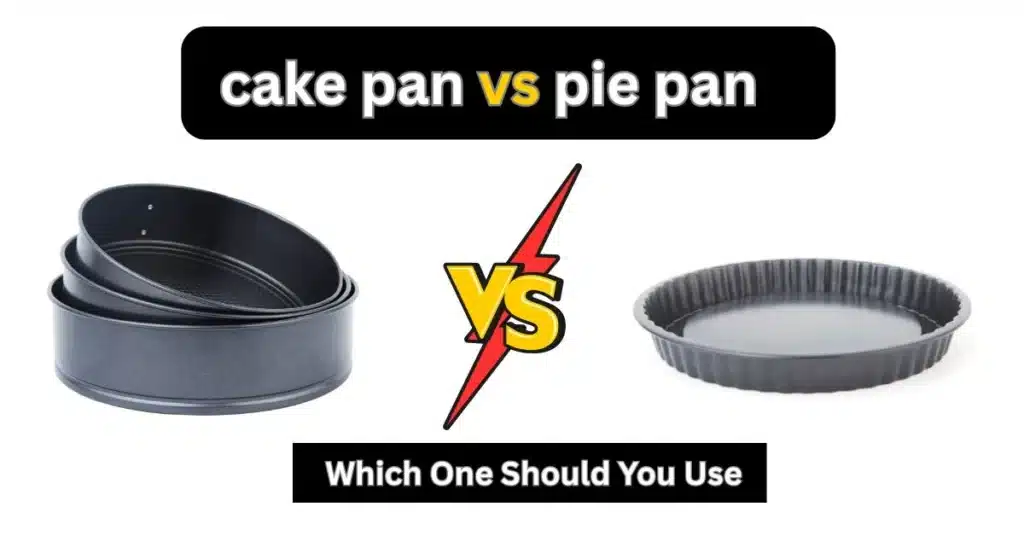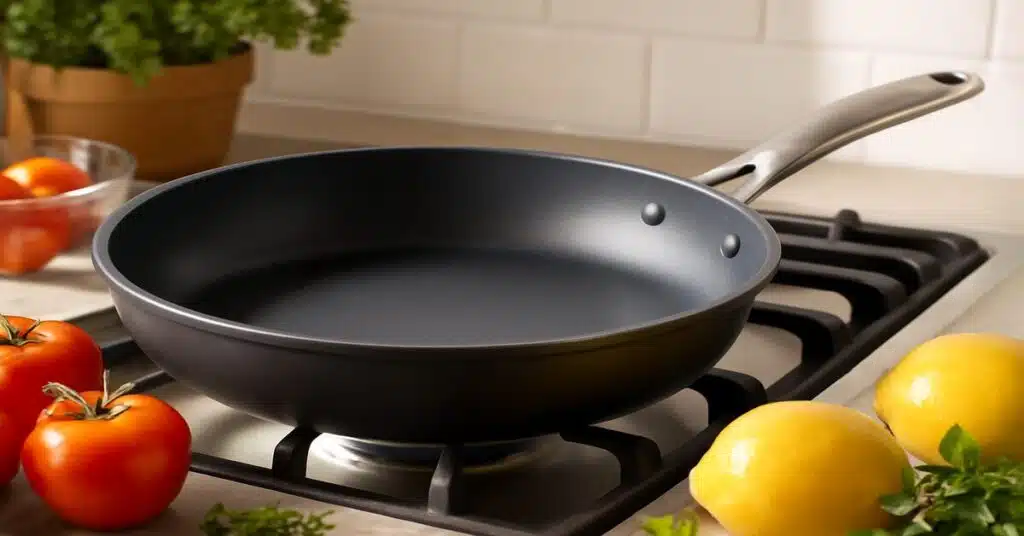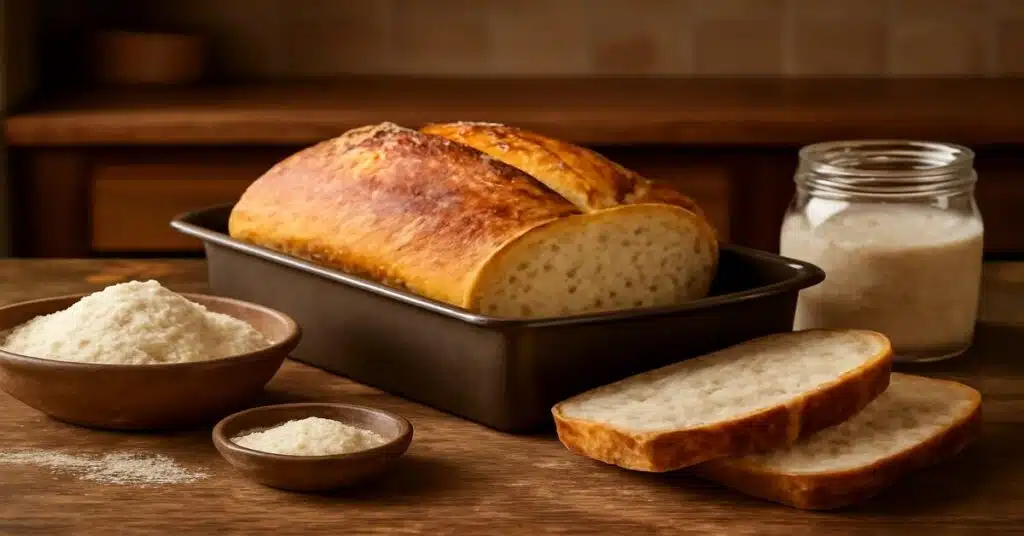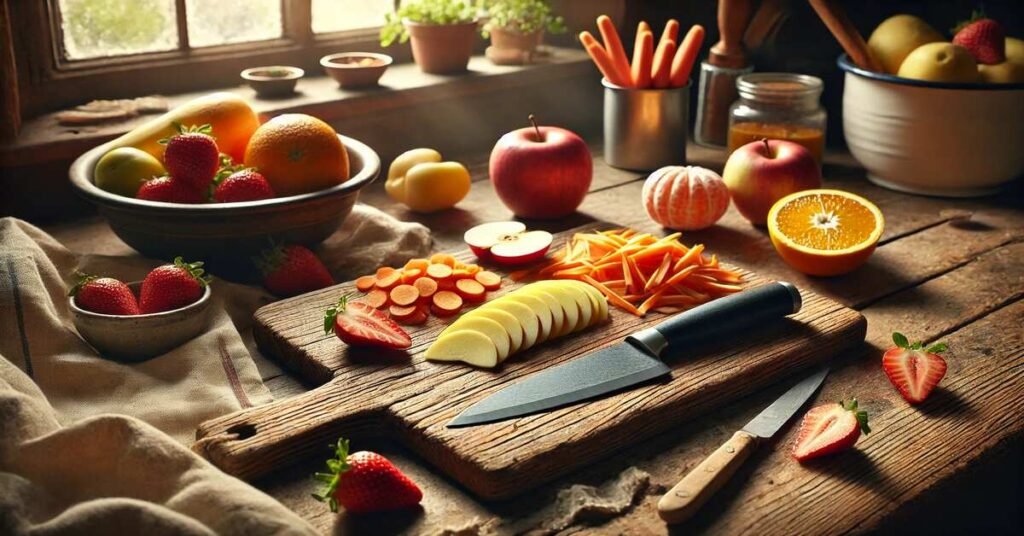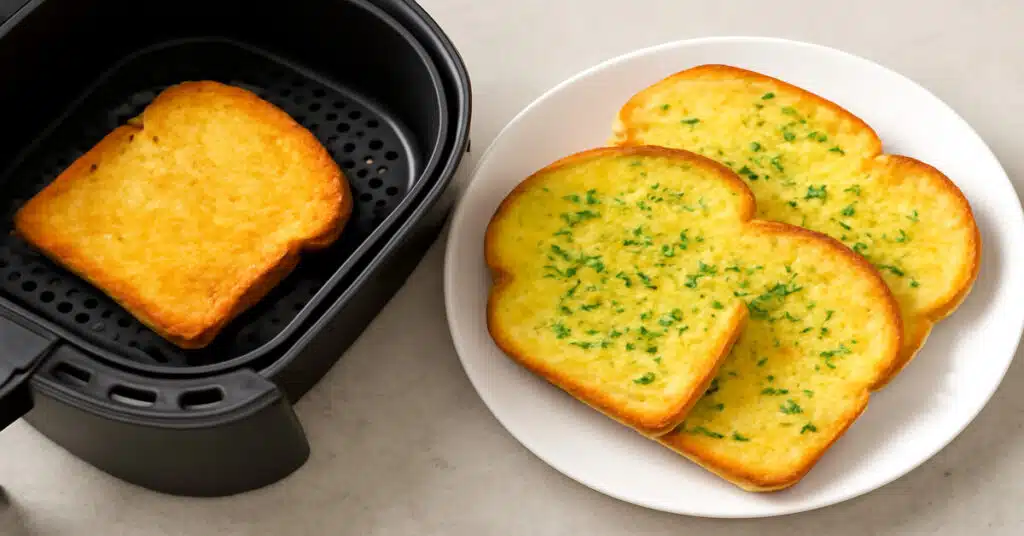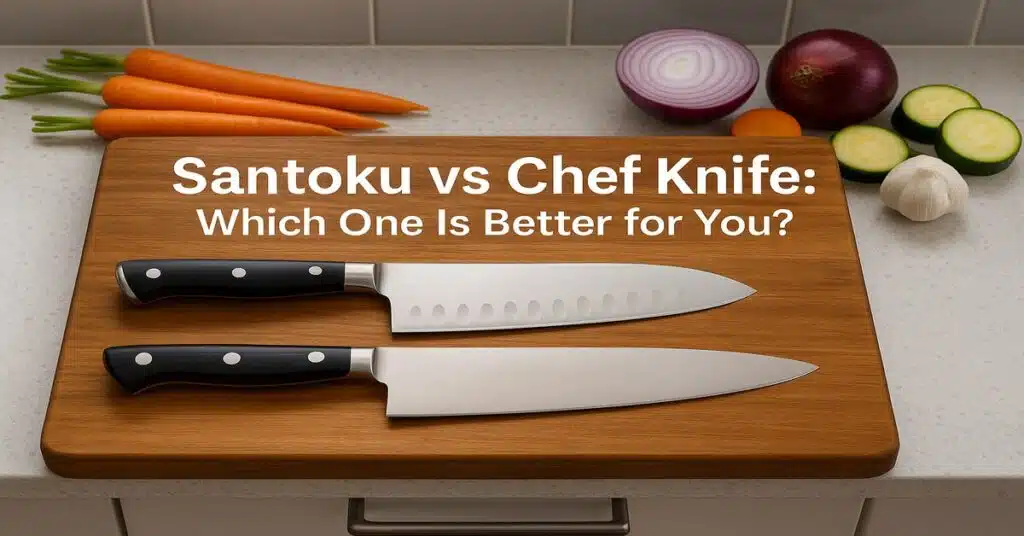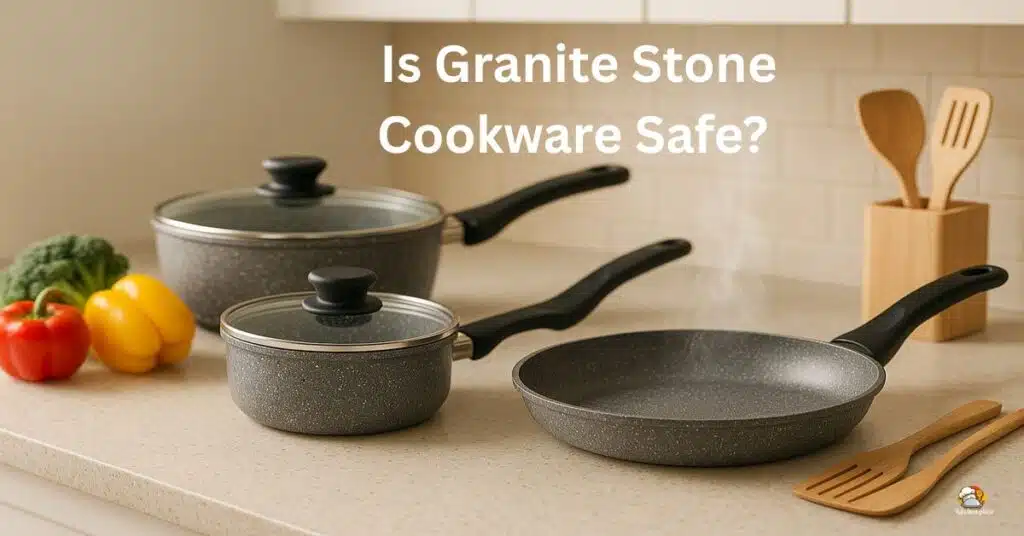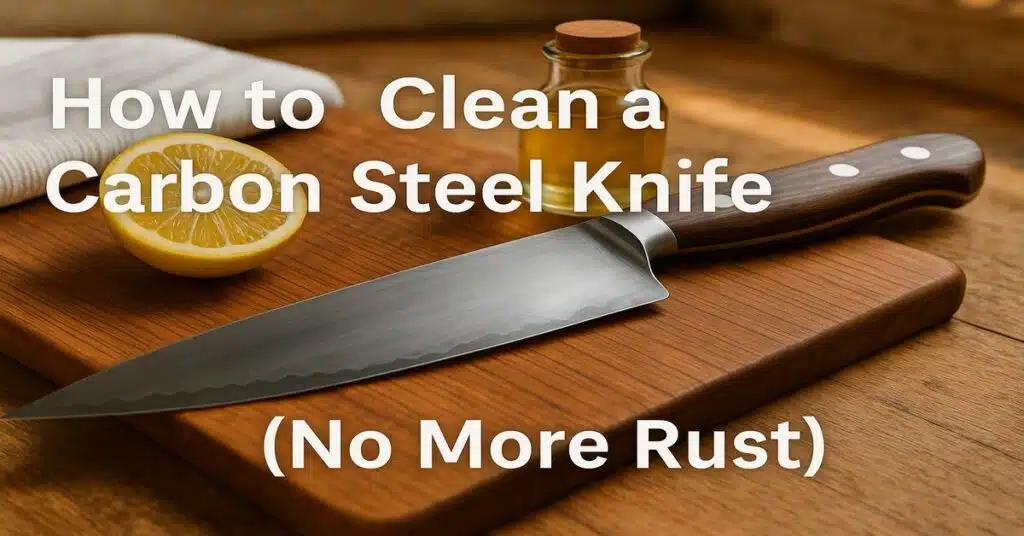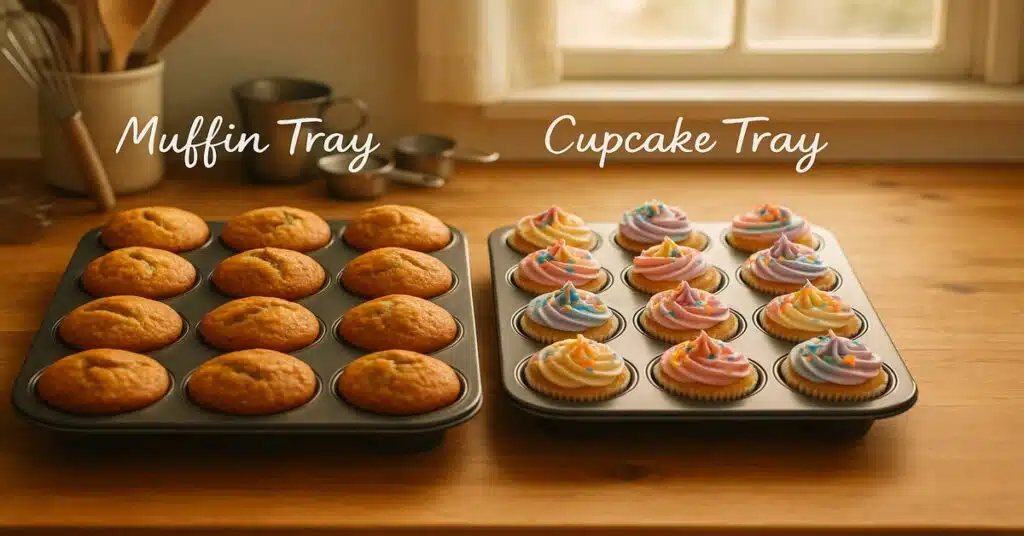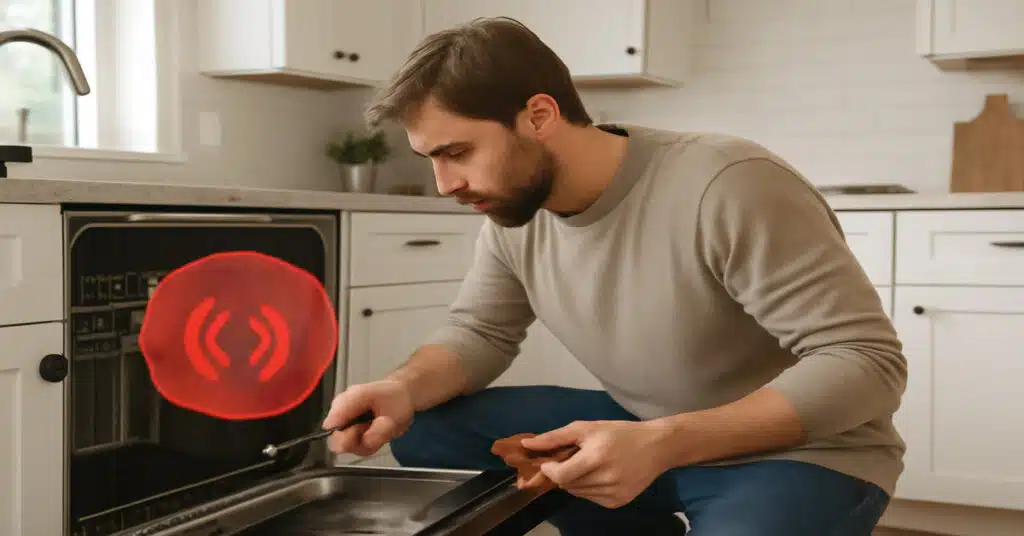That One Time I Swapped My Pie Pan for a Cake Pan
Last Thanksgiving, I was halfway through making an apple pie when I realized my glass pie dish was missing. Panicked but determined, I reached for my 9-inch round cake pan. I lined it with parchment, crossed my fingers, and hoped for the best.
The pie is technically baked. But the crust was soft, the sides sagged, and the classic golden edge I love? Nowhere in sight.
That kitchen moment taught me a valuable lesson: not all baking pans are created equal. If you’ve ever wondered about the real difference between a cake pan and a pie pan, you’re not alone.
In this article, I’ll break it all down based on real-life use: shapes, materials, best uses, and even when it’s okay to swap one for the other.
Let’s settle the cake pan vs pie pan debate once and for all.
Quick Verdict: My Pick and Why
Quick Answer: Use a cake pan for structure and even layers. Choose a pie pan for crust texture and classic pie presentation.
When I first swapped pans in a baking emergency, I learned the hard way how different they really are. From wall shapes to crust crispness, the design of each pan deeply affects the final result.
If you’re wondering which one to use—or if you can safely substitute one for the other—here’s a simple breakdown based on experience:
Cake Pan vs Pie Pan: At a Glance
| Feature | Cake Pan | Pie Pan |
| Wall Shape | Straight sides | Sloped sides |
| Best For | Layer cakes, brownies | Fruit pies, quiches |
| Material Options | Aluminum, non-stick | Glass, ceramic |
| Crust Crispness | Moderate | High |
| Substitution Risk | Low (using for pie) | High (using for cake) |
As someone who’s baked dozens of cheesecakes, brownies, and apple pies, here’s what I’ve found:
- Cake pans: (especially non-stick aluminum ones) give consistent structure. The tall, straight sides are perfect for even layering, and they help control batter rise.
- Pie pans: with their shallow depth and sloped edges, are made for crisp, flaky crusts. They allow steam to escape, giving your pie that golden, crunchy edge.
For beginners: I often recommend starting with a cake pan. It’s versatile, easier to line with parchment, and more forgiving if you’re still mastering baking times and fillings.
But if you’re aiming for a perfectly textured crust, a dedicated pie dish—especially ceramic or tempered glass—is your best friend.
Bottom line? Choose based on your desired result—structure or crust.
What a Cake Pan Offers (and How I Use It)
Let’s talk cake pans. My trusty 9-inch round cake pan has been through birthdays, bake sales, and even one experimental eggplant lasagna. It’s one of the most dependable tools in my kitchen—and for good reason.
Straight Sides = Clean Layers
One of the biggest advantages of a cake pan is its straight, high walls. Unlike a pie pan, which has sloped sides that flare outward, a cake pan gives you structure. That means even layers, perfect stacking, and a uniform shape. If you’re baking a sponge cake or layer cake, this is key to getting those Instagram-worthy slices.
Built for Depth
Cake pans are typically deeper than pie pans, often 2 to 3 inches tall. That extra depth allows for more batter without the risk of spillover. This makes them perfect for baking rich batters like chocolate fudge or banana bread—anything that rises high or needs a longer bake.
Material Flexibility = Custom Results
Over the years, I’ve used aluminum, non-stick, and even stainless steel cake pans. Aluminum heats evenly, helping your cakes bake consistently across the surface. Non-stick makes cleanup easier (though it scratches over time). I avoid glass or ceramic for cakes—they hold too much heat and often brown the bottom too quickly.
If you’re shopping, some of the best cake pans I’ve used are from Fat Daddio’s and USA Pan—they’re durable, resist warping, and clean up beautifully.
Works Well With Accessories
I almost never bake a cake without parchment paper at the bottom. It guarantees a clean release. For more precise bakes, I sometimes use baking strips to prevent doming and help my cakes stay flat. These are especially handy if you’re stacking multiple layers.
More Than Just Cakes
Though it’s called a cake pan, I use mine for way more:
- Brownies: You get perfect edge pieces every time
- Cheesecakes: In a springform version, of course
- Baked pasta: Yep, when I’m out of casserole dishes
- Frittatas: For weekend brunch, it bakes evenly without overcooking the edges
A Great Starting Point for Beginners
If you’re new to baking, a cake pan is the most forgiving option. It doesn’t demand perfection. The straight sides help guide the batter upward, and most recipes are written with cake pans in mind.
So when someone asks me, “Can I use a cake pan for pie?” —I say yes, but be mindful: the straight sides will affect the crust and shape. But if you’re baking a cake? Start with the right tool.
What a Pie Pan Offers (and How It Performed for Me)
Pie pans are a whole different beast—especially when it comes to crusts, texture, and presentation. I’ve tested everything from metal to ceramic, and each type of pie dish plays a unique role in baking success. Here’s what I’ve learned through hands-on experience:
Fluted Edges & Sloped Sides: The Signature Look
There’s something iconic about that ruffled, fluted edge on a homemade pie. Unlike cake pans with straight sides, pie pans are designed with sloped sides that help shape the crust and allow steam to escape. That’s what gives you that crispy, golden finish and a clean slice.
Whether it’s apple, cherry, or key lime, the shallow pan depth helps the filling cook evenly and the bottom crust crisp up—especially if you use a glass pie pan where you can literally see the bottom browning.
Pro Tip: Want that perfectly browned bottom crust? Place your pie pan on a preheated baking sheet. It boosts heat distribution and minimizes soggy spots.
Material Matters: Glass vs Metal vs Ceramic
Each bakeware material behaves differently:
- Glass pie pans (my go-to): Great for beginners because you can monitor the crust color. They hold heat well but cool slowly.
- Ceramic pie dishes: Excellent heat retention, perfect for custards like pumpkin or sweet potato pie.
- Metal pans: Heat up fast and brown the crust quickly—but you’ll need to watch for overbaking.
I’ve found that blind baking is essential when using pie pans, especially for pies with liquidy fillings. I always use parchment paper and pie weights to prevent the crust from bubbling up or shrinking.
Best Uses for Pie Pans
Over the years, my pie pans have seen their fair share of fillings. Here’s what I use them for most:
- Fruit pies (apple, blueberry, cherry)
- Custard pies (pumpkin, lemon meringue)
- Savory pies (quiche, chicken pot pie)
- Meat pies (shepherd’s pie, tourtière)
They’re great for any dish where the crust is the star. And because of the shallow depth, they cook faster than cakes and typically don’t need long baking times.
Challenges I’ve Faced with Pie Pans
Pie pans aren’t without their quirks:
- No batter containment: I once tried baking a cake in a pie pan, and it overflowed like a mini volcano.
- Fragility: Glass and ceramic pans can crack if you go from freezer to oven without tempering.
- Uneven baking: With metal pie pans, I’ve seen hotspots form unless I rotate the pan halfway through baking.
Still, nothing compares to the satisfying crackle of a pie crust when it’s baked right. The heat distribution, especially in ceramic or glass, ensures that every bite has that warm, flaky magic.
Based on my experience, if your recipe demands crust crispness, blind baking, or fluted edges—go for the pie pan. It’s built for it.
Side-by-Side Breakdown: Which Pan Wins Where
After years of swapping between pie dishes and cake pans, I’ve come to appreciate their unique strengths. Sometimes I bake a deep chocolate cake for a birthday, and other times it’s a flaky apple pie for a holiday gathering.
Here’s how they compare when it comes to real-life baking performance:
Cake Pan vs Pie Pan — Head-to-Head Comparison
| Factor | Best Pick | Why It Wins |
| Crust Texture | 🥧 Pie Pan | Sloped sides allow airflow → crispier, golden edges |
| Deep Fillings | 🍰 Cake Pan | Tall, straight walls hold more batter or filling without overflow |
| Browning Control | 🔥 Metal Pans | Excellent heat conduction = even browning on bottom and sides |
| Easy Removal | 🔓 Springform/Pie Dish | Springforms release easily; fluted pie dishes hold shape but need cooling |
| Baking Flexibility | 💡 Cake Pan | Handles cakes, brownies, pasta bakes, and even frittatas |
| Crust Monitoring | 👀 Glass Pie Pan | Lets you see doneness from below—great for avoiding soggy bottoms |
| Beginner Friendly | 🛠️ Cake Pan | Easier to prep, line with parchment, and clean—less risk of crust failure |
My Honest Take From Baking Both:
- If I’m baking for looks and crust perfection (like a Thanksgiving pie), the pie pan wins hands down. It gives me the fluted edges and that golden-baked base I can actually see browning through my glass dish.
- But when I need structure, volume, or versatility, I grab my cake pan. Whether it’s banana bread, lasagna, or a layer cake—its straight walls just work better.
From my kitchen to yours: I use both pans weekly, but I choose based on the end result I want. Crust perfection? Pie pan. Rise and structure? Cake pan.
When to Choose One Over the Other (Use Case Guide)
If you’re still torn between your cake pan and pie dish, here’s how I decide what to use — based on real baking scenarios.
For Beginners or Casual Bakers: Start with a Cake Pan
If you’re just getting into baking or don’t bake often, go with a cake pan.
In real-life use, cake pans are way more forgiving. The tall, straight sides help your batter rise evenly, and if you make a mistake with filling depth or timing? It’s less likely to ruin your dish.
I also find cake pans easier to prep—a quick parchment lining, and you’re good to go.
Why cake pans are beginner-friendly:
- Fewer soggy bottom risks
- Better structure for learning
- Works for more than just cake (brownies, baked eggs, casseroles)
If Crust Is Key (Especially for Fruit Pies): Use a Pie Dish
When the crust matters most—like with fruit pies, custards, or anything flaky—you’ll want to reach for a dedicated pie pan.
From my testing, glass and ceramic pie dishes give the best results for golden, crisp crusts. Their shallow, sloped shape promotes airflow and helps steam escape, which is exactly what you want when baking a traditional apple pie or quiche.
Best pie pans for crisp crusts:
- Glass: You can monitor browning from below
- Ceramic: Holds heat longer for even bakes
- Metal: Crust browns fast—but watch for overbaking
For Deep-Dish Desserts: Cake Pan All the Way
Making a deep-dish brownie, baked cheesecake, or dense banana bread? That’s cake pan territory.
I prefer 2.5″–3″ deep pans with straight walls for taller batters. They’re perfect for holding volume and supporting long bakes.
Tip: Use springform cake pans for layered cheesecakes or delicate desserts that need easy release.
Emergency Scenario (No Pie Pan Available): What Worked Best for Me
There’ve been times—like that Thanksgiving mishap—when I had no pie pan in sight. So I used my round 9″ cake pan.
Did it bake? Yes.
Was the crust crispy? Not quite.
Here’s how to improve your odds if you need to bake a pie in a cake pan:
- Line with parchment to help the crust hold its shape
- Reduce the filling by 20% to avoid spillover
- Skip decorative edges—the straight sides won’t support fluting
- Blind bake the crust if using custard or wet fillings
From my experience:
A cake pan will work in a pinch, but expect a softer crust and no fluted edges. It’s best saved for backup or simpler fillings.
Final Tip for Everyday Use
In real-life baking, I switch between pans depending on what I’m making.
If I want:
- A crisp, show-stopping pie → I grab the pie dish
- A sturdy, reliable pan for anything else → I stick with the cake pan
Both pans have earned their place in my kitchen, but choosing the right one for the right bake? That’s the secret sauce.
My Final Verdict: What Should You Use?
If I had to pick just one pan to rely on for everyday baking—it would be my cake pan. It’s flexible, reliable, and gets the job done whether I’m baking banana bread, brownies, or a classic birthday sponge.
But if I’m hosting guests, bringing dessert to a potluck, or baking my signature pecan or apple pie? It’s the pie pan all the way. There’s something deeply satisfying about that golden fluted crust—a detail only a proper pie dish can deliver.
Why the Pie Pan Still Has My Heart
There’s real joy in lifting a slice of warm fruit pie, seeing those crisp edges hold together, and hearing the bottom crust crackle just right. When I use my ceramic or glass pie dishes, it’s not just baking—it’s celebration.
Holiday pies, potlucks, family dinners… every time I serve one, someone asks, “What pan did you use for this?”
And I smile, because I know the right pan made that moment possible.
Why the Cake Pan Wins for Everyday Use
On busy weekdays, or when I’m testing new recipes, I reach for my 9-inch cake pan.
It doesn’t judge. It works for everything. It’s the pan I trust when I just want a bake to turn out right without fuss.
Whether it’s a chocolate cake for my nephew’s birthday or a midweek zucchini frittata—I know it’ll bake evenly, clean easily, and stack neatly in my cupboard.
My Real-Life Rule of Thumb
- Want crispy crust, classic shape, and that flaky bottom? Use a pie pan.
- Need volume, versatility, or stress-free baking? Stick with a cake pan.
- In a pinch? You can swap—but know what you’re sacrificing.
Final Thoughts from My Kitchen
I hope my side-by-side breakdown saves you some guesswork. It took me years of baking, testing, and messing up to figure out which pans really deliver.
And the truth is—there’s no one “right” pan for everyone. It depends on what you’re baking, what tools you have, and what kind of results you’re aiming for.
My advice? Try both. Bake with intention. And when in doubt—trust your recipe and your results.
FAQs: Quick Answers to Common Pan Questions
I’ve heard these questions dozens of times from fellow home bakers—and asked them myself in the early days. Here are my real-life answers, based on testing both cake pans and pie dishes in all kinds of bakes.
Can I bake a pie in a cake pan?
Yes, but it’s not ideal.
I’ve done it in a pinch (like that Thanksgiving mishap), but the crust won’t get as crisp, and you’ll lose those fluted edges.
Tip: Line with parchment and reduce filling by 20% to avoid spillover.
Is a pie pan the same as a cake pan?
Not at all.
A pie pan has sloped sides and shallow depth—perfect for crisp crusts and custards.
A cake pan has straight, high walls—built for structure and rise.
Which pan gives the best crust for fruit pies?
Glass or ceramic pie dishes win every time.
They heat gently and evenly, giving you that golden, flaky bottom.
I love seeing the crust brown through my clear glass pan—no guessing!
What if I don’t have a pie pan?
Use a round cake pan—but adjust your approach.
Skip the fancy edges, line with parchment, and don’t overfill.
Your pie will bake, but expect a different texture and look.
Can I bake a cake in a pie pan?
Technically yes, but I don’t recommend it.
Cakes may rise unevenly and the sloped edges won’t give you a clean shape.
For best results, use a true cake pan.

